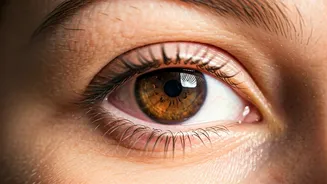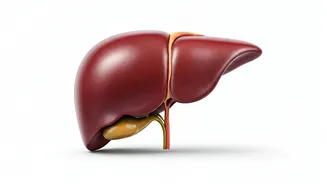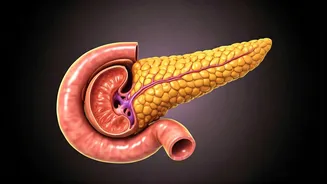The Gray Hair Mystery
Graying of hair is a natural phenomenon, typically marking the passage of time. The process occurs when the body's production of melanin, the pigment responsible
for hair color, slows down or ceases altogether. This typically occurs as we age. Several elements, including genetics, ethnicity, and overall health, impact when this process begins and how quickly it progresses. Interestingly, some types of graying are potentially reversible. Understanding these variations and contributing variables is the initial step towards addressing the issue and finding possible solutions. It's important to remember that not all graying is the same, and different kinds have different reasons and possible therapies.
Factors Behind Graying
Several factors play a crucial role in how hair turns gray. Genetics often sets the stage; if your parents or other relatives grayed early, you are more likely to as well. Ethnicity also impacts the process, with some groups graying earlier than others. Furthermore, chronic stress has been linked to premature graying. Conditions like autoimmune diseases and nutritional deficiencies can also impact hair pigmentation. Hormonal changes, such as those associated with pregnancy or menopause, can sometimes influence hair color. Furthermore, exposure to environmental toxins and excessive use of harsh hair products might contribute to the issue. Recognizing the interplay of these diverse elements is fundamental to any potential intervention or course of action.
When Reversal is Possible
There are instances when graying hair can be partially or completely reversed. The most promising scenarios involve addressing underlying health issues or lifestyle changes. Nutritional deficiencies, especially of vitamins like B12 or minerals such as iron, can sometimes be corrected, leading to renewed pigment production. Similarly, managing chronic stress through techniques like meditation or yoga may slow down or even reverse the graying process. Certain medical conditions, when treated, might also improve hair pigmentation. Moreover, in cases where hair graying is caused by external factors such as exposure to harsh chemicals or oxidative stress, minimizing the source of damage can sometimes help hair regain its color. Therefore, determining the underlying cause is key.
Lifestyle Changes That Help
Several lifestyle modifications can positively impact hair health and possibly slow down graying. A balanced, nutrient-rich diet is essential; focus on foods rich in antioxidants and vitamins. Regular exercise can boost circulation, which is vital for hair follicle health. Managing stress through relaxation techniques or mindfulness practices is also beneficial. Adequate sleep supports overall health, including hair health. Avoiding smoking and limiting alcohol consumption is also recommended. Certain hair care practices, such as minimizing the use of harsh chemicals and heat styling, can help protect hair. In essence, adopting a holistic approach that targets both internal and external factors is the key.
Foods for Hair Health
Diet plays a vital role in the health and pigmentation of hair. Incorporating specific foods into your diet can provide the nutrients needed to support hair health and potentially slow down or even reverse graying. Antioxidant-rich foods, such as berries, spinach, and kale, protect hair follicles from damage. Foods high in protein, like eggs, lean meats, and lentils, provide the building blocks for hair growth. Omega-3 fatty acids, found in fatty fish like salmon, promote scalp health and reduce inflammation. Foods rich in iron, such as spinach and red meat, can address deficiencies that may contribute to graying. Including these food groups in a balanced diet can provide hair with the necessary vitamins and minerals for optimal health.
Treatments and Therapies
While not a definitive cure, various treatments and therapies may help improve hair pigmentation and support overall hair health. Dietary supplements, particularly those containing vitamins and minerals like biotin, vitamin D, and iron, can address nutritional deficiencies. Certain topical treatments, such as products containing catalase, a naturally occurring enzyme, are designed to stimulate pigment production. Some medical treatments address underlying health conditions contributing to graying hair. Additionally, techniques like scalp massages can improve circulation and stimulate hair growth. For an informed decision, consultation with a healthcare professional or a trichologist is crucial to determine the most effective and safe options based on individual needs and circumstances.
Gray Hair: Not Reversible?
While some graying can be reversed, not all instances respond to treatment. Genetic predispositions, in particular, may make complete color restoration unlikely. Age-related graying, which is a natural consequence of the aging process, may be difficult to fully reverse. Other underlying medical conditions might not be directly linked to hair pigmentation. Sometimes, the damage to hair follicles is extensive. Also, there might be environmental factors that cannot be completely controlled. Realistic expectations are key. Consulting with a healthcare professional can assist with determining the specific type of graying experienced and the most appropriate course of action, whether it is for reversal or management.






